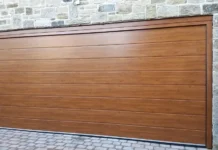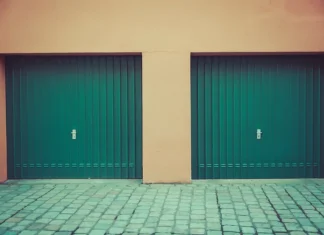During the day, your table gets more than its fair share of activity. It’s at the heart of your house, so it’s no wonder that it receives dents and scrapes on a regular basis. However, if shabby-chic isn’t to your taste, a scuffed piece of furniture might not be right for you.
Applying polyurethane coatings on your living, dining, or kitchen table will preserve it from harm while also improving its appearance. A polyurethane finish provides long-term durability and resilience, as well as the ability to keep your table appearing new and fresh as it ages. Applying polyurethane on an antique table is a fantastic way to give it a new lease on life.
Now the question comes to what type of polyurethane finish one should use and what are the differences. So, Let’s get into it.
Different Types of Polyurethane
It’s important to know the difference between types of polyurethane finishes before you apply one. So, we’ll go through the major differences between them and we’ll also assist you in selecting the one that best meets your requirements.
- Satin Polyurethane Finish
- Matte Polyurethane Finish
What is Satin Polyurethane and How Does It Work?
Satin polyurethane creates a medium to low sheen finish that covers dirt and flaws better than high-gloss finishes. Satin finishes have a larger quantity of flattening paste than semi-gloss or high-gloss finishes, giving them a more delicate sheen.
This polyurethane finish is a subtle solution for tabletops with dust spots as it doesn’t draw attention to flaws. Satin polyurethane flooring is also easier to maintain because of this feature.
Pros of satin polyurethane
- A satin finish is less slick, which means it’s less likely to cause sliding incidents.
- This finish covers dirt and flaws in the surface better.
- It reflects more light than matte polyurethane, which some people prefer since it is more visually pleasing.
- Satin coatings need little upkeep than other finishes.
Cons of satin polyurethane
- This coating is more susceptible to scratches than a matte polyurethane finish.
- Satin finish is not as bold as any other finish.
What Is Matte Polyurethane and How Does It Work?
Matte polyurethane is the polar opposite of gloss polyurethane in terms of sheen levels. It has a low sheen gloss grade with very little light reflection. Matte is not the most popular finish due to its flat look, despite the fact that certain consumers adore it. Instead, matte finishes are preferred because of their superior ability to disguise dirt and surface defects.
Pros of matte polyurethane
- Matte finish lacks sheen, it provides realistic coloration and allows you to appreciate the grain texture.
- Matte polyurethane is popular right now, and it will give your home a modern, stylish feel.
- It doesn’t reflect light, so if you prefer a rustic look, this is the finish for you.
Cons of matte polyurethane
- While matte coatings are long-lasting, they are less resistant to dampness. As a result, this polyurethane finish is more susceptible to stain than other alternatives.
Satin vs Matte Polyurethane
Matte polyurethane vs satin polyurethane is two options for those searching for the lowest sheen level in their polyurethane coating. Due to the high quantities of flattening paste in the matte part’s formula, hardly any light reflects off its surface. The more flattening paste is used in satin sheens, although the amount is less than in matte polyurethane. As a result, a satin polyurethane will reflect some light while hiding surface defects and grime effectively.
As it represents a perfect compromise between gloss and flat polyurethane finishes, it is generally the most preferred option for residential applications on table tops.
How to Choose a Polyurethane Finish for Your Table Tops
It might be difficult to pick the correct polyurethane finish for your hardwood table tops. But now that we’ve already covered the types of polyurethane treatments, here are few things to keep in mind when selecting a polyurethane finish:
Color of the Finish
The color of the polyurethane finish affects the entire appearance of your flooring, it’s necessary to think about it. Some polyurethane finishes come in a variety of hues, while others only come in a few tones. Choose a hue or room setting that you like, then choose a finish color based on it. Eventually, everything boils down to your design concept in end.
Price of a polyurethane finish
Cost is a crucial consideration, so keep an eye out for alternatives that fit into your budget. Polyurethanes with a satin finish are more costly than those with a matte finish. If you don’t want a mustard tint on your table tops, choosing the less expensive alternative isn’t a good idea. Dark wood is good if you’re comfortable with it or if you’re working on a large job. Matte polyurethane finish is suitable for homes, gymnasiums, and other big surfaces.
Drying Time
Another factor is to consider the time constraint. Choose a fast-drying polyurethane if you need something done quickly. In this aspect, matte polyurethane reigns supreme. It dries faster and maybe recoated in as little as two hours, whereas satin polyurethane requires 24 hours to settle in.
Ease of Application
This is a difficult task. Both polyurethanes are applied in the same way, with a few small differences. Matte polyurethanes are a lot easier to work with. Ingredients, thinning agents, and drying time are the key differentiators. Matte polyurethane is easier to apply because you don’t always have to sand in between the coats. This saves time and money.
Odor of Polyurethane
Because you’ll be polishing your furniture for hours, you should think about the odor the finish generates. Matte polyurethane emits less volatile organic compounds and has a low odor, making it safe for the environment and your health.
The odor of satin polyurethane, on the other hand, is awful. When using this, you’ll need to wear a respirator or a face mask. It also has an adverse effect on the ecosystem.
Use a satin polyurethane finish over a matte when:
- You want a surface that is more resistant to dents, scratches, and wear and tear than other glossier choices.
- When you want a finish that will effectively hide dirt, debris, footprints, and imperfections on the wood surface.
- If you have dogs or other pets,the finished wood is likely to get scratched and dented so satin polyurethane comes in handy.
- You’re not primarily concerned about moisture resistance. Satin coatings repel moisture and stains but aren’t as durable as semi-gloss or poly finishes.
- You’re putting the finishing touches on a high-traffic area, a vast space, or a high-touch table surface.
- Finishing a table of master bedroom or a living area with reflecting finishes that aren’t overly distracting.
Conclusion
Aside from their distinct looks, matte and satin finishes each offer their own set of functional and aesthetic benefits and drawbacks. Both satin and matte finishes contain flatteners, which provide the completed item with a smooth, natural appearance. The distinctions can be rather subtle.
Whichever finish you choose, you can rest confident that it will give scratch and water resistance and will keep your wood in good shape for many years.












